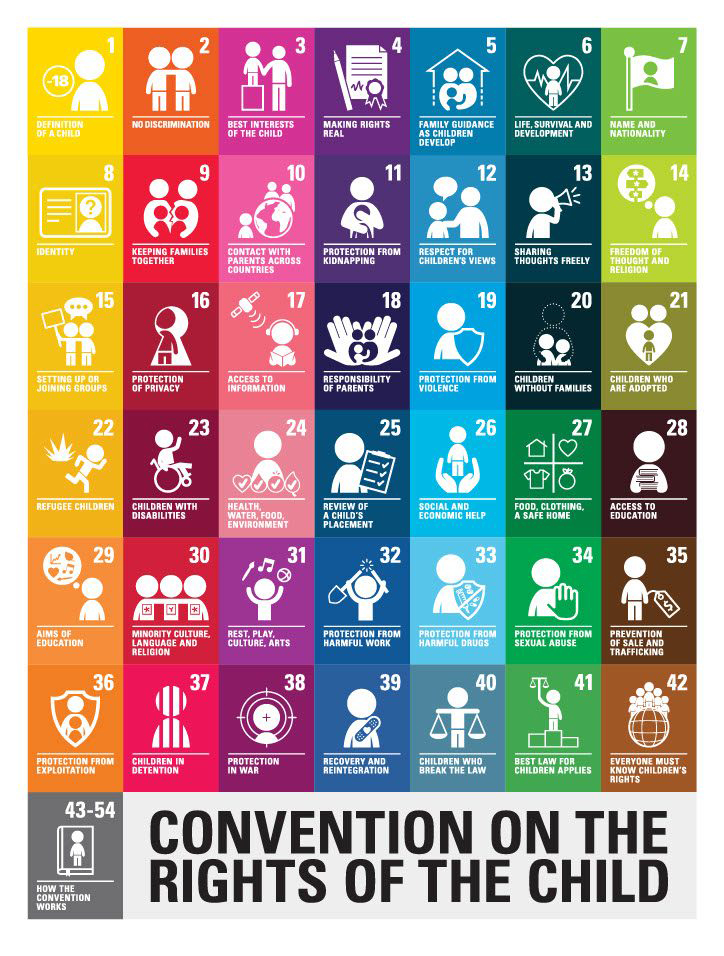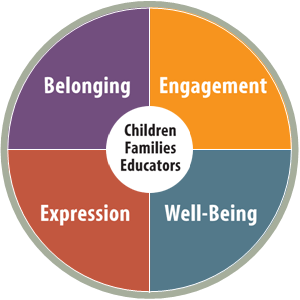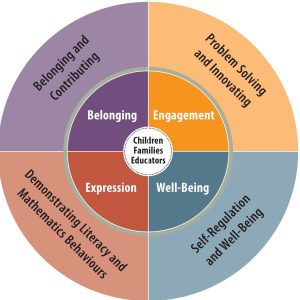1.2 Holistic Health and Wellness in Early Childhood Education and Care
“Well-being addresses the importance of physical and mental health and wellness. It incorporates capacities such as self-care, sense of self, and self-regulation skills” (OME, 2014).
Early years’ settings in Ontario use How Does Learning Happen? Ontario’s Pedagogy for the Early Years and The Kindergarten Program to guide practice with young children. Each framework embeds wellness into its foundation through well-being (OME, 2014) and self-regulation and well-being (OME, 2016). Wellness in young children must be nurtured from a holistic perspective to honour the connectivity between self care and care for others, including more than humans.
Figure 1. The four foundations ensure optimal learning and development. These foundations inform the goals for children and expectations for programs (OME, 2014, p. 8). The Four Foundations by King’s Printer of Ontario.
Reproduced without changes to the original content for non-commercial purposes. [Click to enlarge]
Figure 2. The four frames of Kindergarten (outer circle) grow out of the four foundations for learning and development set out in the early learning curriculum framework (inner circle). The foundations are essential to children’s learning in Kindergarten and beyond. The frames encompass areas of learning for which four- and five-year-old’s are developmentally ready (OME, 2016, p. 14). The Four Foundations by King’s Printer of Ontario.
Reproduced without changes to the original content for non-commercial purposes. [Click to enlarge]
Read
Children are developing at a rapid pace in the early years and must be provided with enriching experiences in safe, healthy, and nutritious environments. Early childhood education is often viewed from an educational and developmental lens without considering the importance of the pedagogy of care. To understand more about the importance of the pedagogy of care, please read the following article:
- What is the Pedagogy of Care? from Community Playthings
As educators we often find we are rushing through our day to ensure all routine tasks are complete. How can we slow down our day to consider wellness for children, their families, ourselves, our colleagues, and the communities we share with others? We will take a deeper dive into how we can embed holistic health and wellness into our everyday practice in early childhood education and care.
As we progress through the chapters it is important to remember the rights of the child. Health, safety, and nutrition are only some of the key aspects for consideration when respecting the rights of the child and finding ways to ensure holistic health and well-being are embedded in our daily practice with all who share the learning space and lands where we reside.

CECE Standard of Practice

Standard III: Safety, Health and Well-Being in the Learning Environment Principle
“Registered early childhood educators (RECEs) intentionally create and maintain environments that support children’s play and learning as well as contribute to a sense of belonging and overall well-being. They ensure that the environment is safe and accessible for all children and families. They also ensure that the environment reflects the values and diversity of the community” (CECE, 2017).



